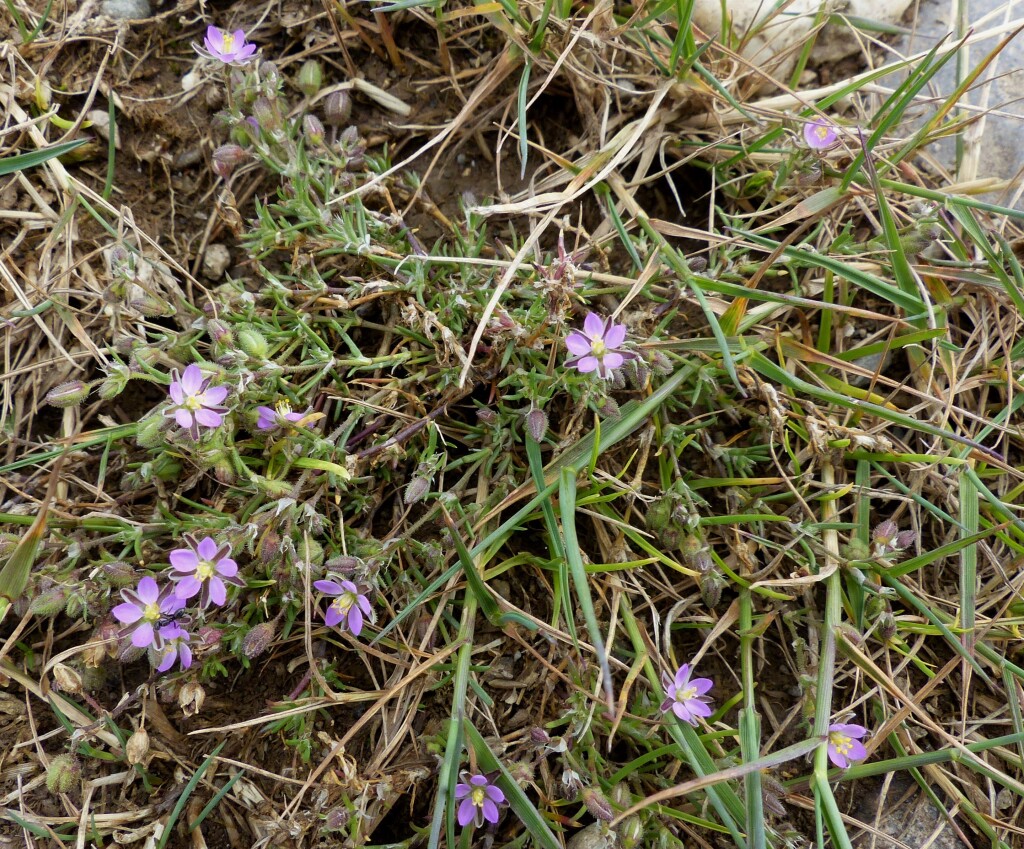Spergularia rubra
(L.) J.Presl & C.Presl Red Sand-spurreyAnnual to short-lived perennial; taproot slender to woody; stems slender, prostrate to decumbent (3–)5–30 cm long, mostly glabrous. Leaves linear-filiform, with prominent awns to 0.5 mm long, strongly fasciculate, fleshy, 4–25 mm long, 0.4–1.2 mm wide, glabrous to glandular-hairy; stipules acuminate, (2.5–)3.5–5 mm long, longer than wide, connate for much less than half their length, conspicuously silvery. Inflorescence many-flowered, leafy, cymose; pedicels at first reflexed in fruit, finally spreading, filiform, longer than sepals, glandular-hairy. Flowers 3–5 mm diam., occasionally not opening; sepals 3–4(–5) mm long, green or purplish with basal dots absent or obscurely purplish-red, the dense glandular hairs 0.15–0.25(–0.4) mm long; petals 2.4–3.8 mm long, usually shorter than sepals, uniformly rose-pink or lilac; stamens (5–)10. Capsules ovoid, equalling or slightly exceeding sepals; seeds 0.4–0.6 mm long, rugulose-tuber-culate to finely papillose, dark red-brown to grey-brown, unwinged. Flowers Jan.–Apr., Sep.–Dec.
LoM, MuM, Wim, GleP, VVP, VRiv, MSB, RobP, MuF, GipP, OtP, WaP, Gold, CVU, GGr, DunT, NIS, EGL, EGU, WPro, HSF, HNF, Strz, MonT, VAlp. Also States except NT. Native to and common throughout most of Europe. A widespread weed of disturbed sandy or gravelly soils, from near sea-level to alps, also on clay near waterholes in more arid regions.
Adams, L.G.; West, J.G. (1996). Spergularia. In: Walsh, N.G.; Entwisle, T.J., Flora of Victoria Vol. 3, Dicotyledons Winteraceae to Myrtaceae, pp. 257–262. Inkata Press, Melbourne.
 Spinning
Spinning




